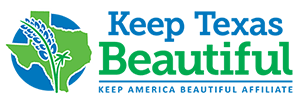By Amanda Hockney, Black Cat GIS
Using Litter Surveys to Teach the Scientific Method to Students
Like it or not, litter is nearly everywhere! Many of the items we use each day produce trash. When that trash is not properly disposed of, it creates litter. Littering is primarily the result of individual behaviors. Because about 85% of littering is the result of individual attitudes, changing individual behaviors is the key to preventing litter.
While the scientific method is a required part of TEKS curriculum, coming up with creative ways to conduct experiments can be difficult. Black Cat GIS’s lesson plan challenges your class to examine a real-world problem.
The Litter Survey Lesson Plan
The lesson plan, created by Black Cat GIS and Biological Services with the support of Keep Texas Beautiful, uses Study, Track, remOve and Prevent (STOP) surveys. STOP is a survey method to gather data on types and abundance of litter.
Teachers can use this lesson plan to get their students thinking about their current knowledge and insight.
- Why is litter a big deal?
- Where does it come from, and why?
- Besides being ugly, what other environmental consequences might there be?
Then, conduct a litter study in a safe area on campus or near the school, and then use the scientific method to decide what kind of study you want to conduct as a class. Ask questions and do background research. Next, create a hypothesis, test your hypothesis, examine your results, and then support or reject your hypothesis. You can even share your data to help scientists in Texas!
This lesson plan can be adapted for K-12, and is science TEKS-aligned at each grade level. For a demonstration of a lesson given at a middle-school level, you can watch this presentation, Icky Sticky Science Investigation.
Download the full lesson plan, data sheet, and other educational resources at https://www.blackcatgis.com/stop.




